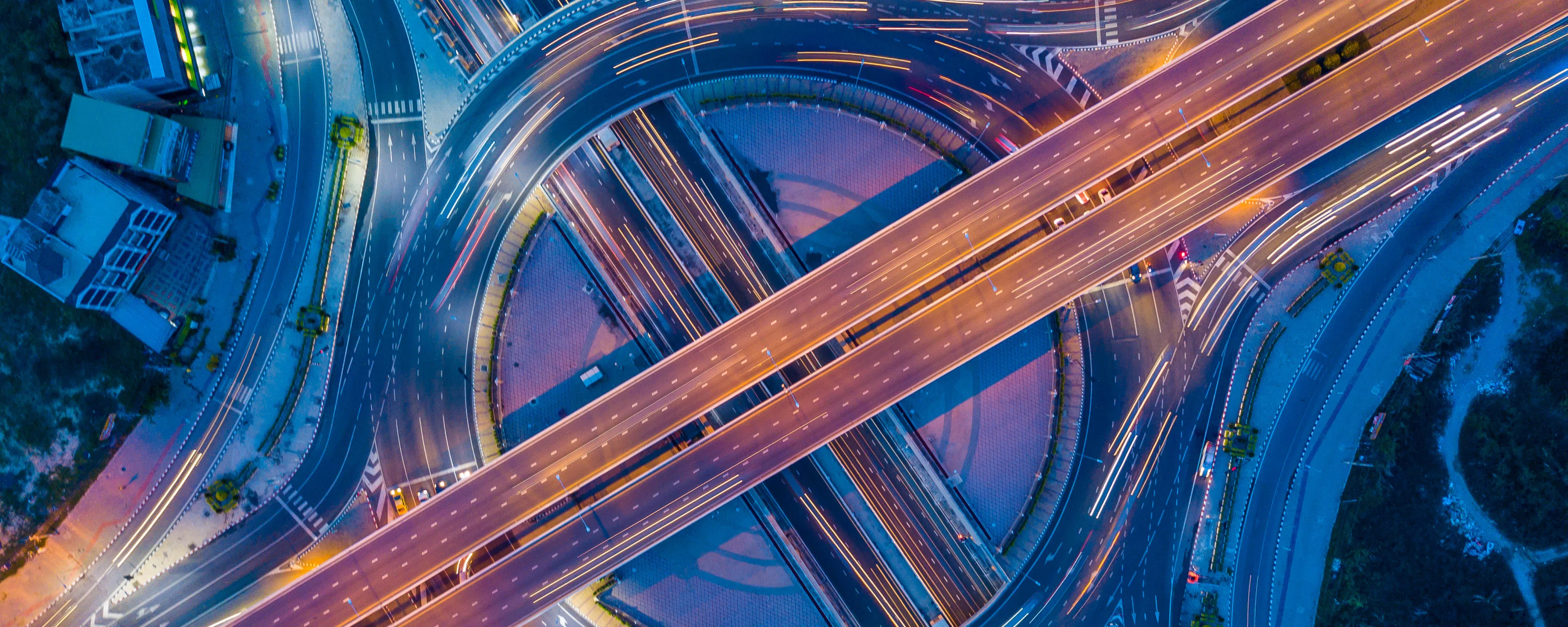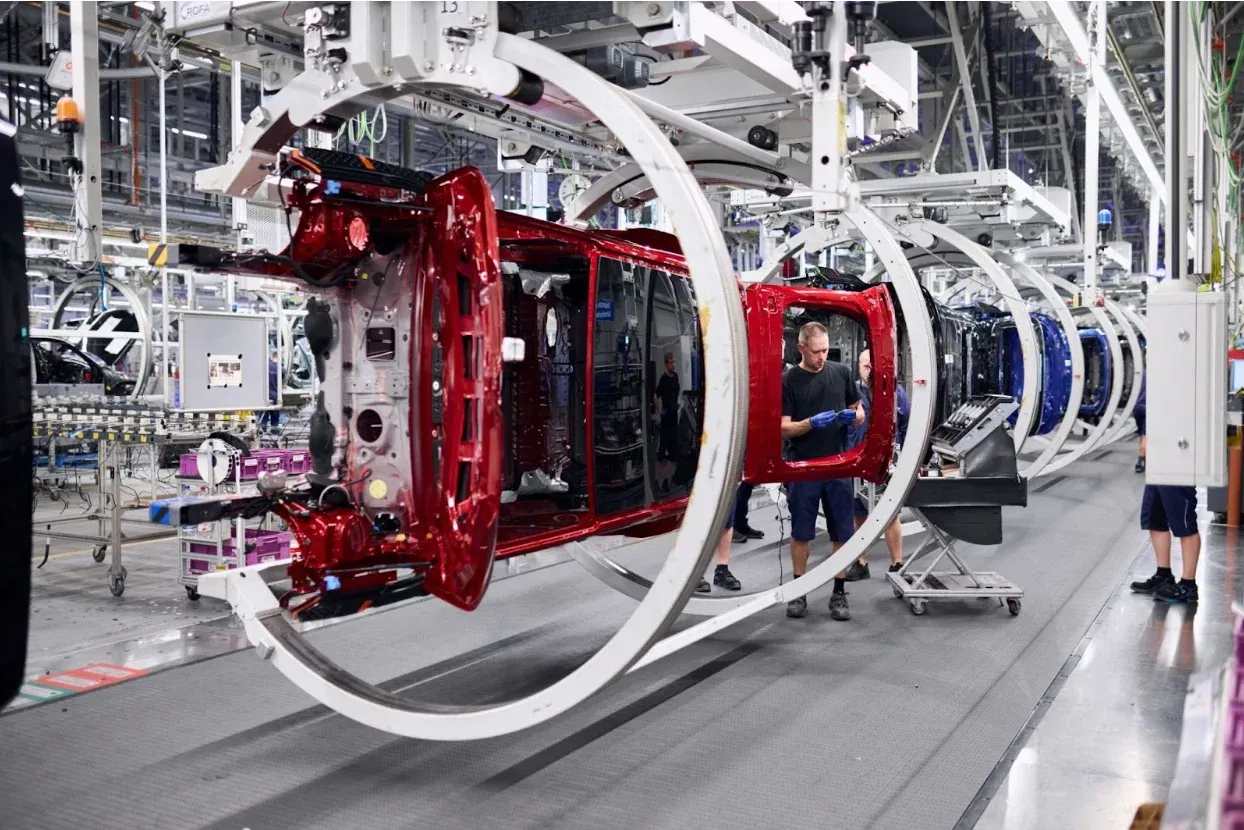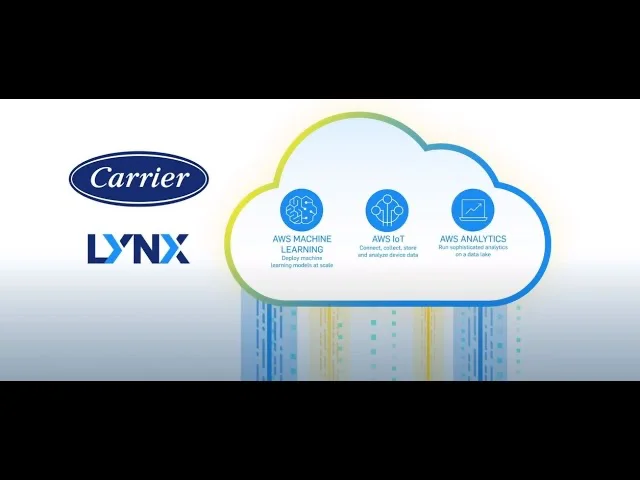Services
SERVICES
SOLUTIONS
TECHNOLOGIES
Industries
Insights
TRENDING TOPICS
INDUSTRY-RELATED TOPICS
OUR EXPERTS

October 7, 2025
The demand for fast and reliable decisions drives the growth of IoT data analytics and stimulates the development and implementation of more sophisticated solutions.
projected CAGR of the analytics market between 2024 and 2030
Grand View Research
bn
the predicted IoT analytics market size by 2030
Mordor Intelligence
bn
North America’s share of the global IoT analytics market by 2030
Business Market Insights
While companies tend to tailor IoT analytics solutions to their needs and workflows, the typical IoT analytics architecture consists of several standard components that work together to turn data from various IoT devices and sensors into valuable insights.
The first layer of the IoT data analytics architecture contains sensors and actuators that collect raw data from the physical world, such as temperature, humidity, light, sound, and other parameters, for further analysis.
This layer consists of communication networks (short-range and long-range, wired), communication protocols, gateways, and edge devices for transferring data between the collection layer and other IoT analytics solutions, as well as transmitting control commands to actuators.
IoT data storage accumulates information collected by IoT devices and sensors and facilitates its long-term storage and management in both structured and unstructured formats, ensuring data availability for further processing and analysis.
At this layer, data undergoes preliminary preparation, including cleaning, filtering, and normalization or denormalization based on the analysis purposes, to ensure its clarity, consistency, and readiness for analytical processing.
Next, data is moved to the analytics systems, where different methods are used, like statistical analysis, regression analysis, time series, and intelligent data analysis, to uncover insights from the datasets.
Data visualization tools transform the generated insights into intuitive and interactive visuals, such as dashboards, graphs, charts, and heat maps for fast and more accurate decision-making, patterns recognition, and trends prediction.
Processing real-time inventory data from RFID tags, barcode scanners, and other sensors across warehouses and retail areas, IoT analytics can provide valuable insights into item movements and stock levels, as well as purchase trends, and help managers optimize inventory levels for reduced stockouts and overstock and improved customer satisfaction.
IoT analytics helps retailers optimize store layout by analyzing data about customer behavior collected from IoT motion sensors and cameras to strategically place products, shelves, and advertising displays to increase their visibility and convenience, improving service quality and sales.
By analyzing data on temperature, humidity, and air quality from IoT sensors installed in stores and delivery trucks, retailers can identify deviations from acceptable standards, like increased temperature or a drop in humidity, and adjust conditions accordingly to prevent product damage.
Data analytics applications can process patient vitals and medical data collected by healthcare IoT to generate valuable insights for caregivers and help create more personalized treatment plans. IoT analytics can also prove helpful with managing chronic conditions, such as diabetes or hypertension, by regularly processing collected patient data to detect potential condition complications in time, improving patients' quality of life.
IoT analytics can process data from connected medical equipment, such as MRI scanners or ventilators, to help medical staff identify early signs of malfunction or wear and predict the need for maintenance, thus minimizing equipment downtime and preventing disruptions in patient treatment.
IoT analytics can process various data from HVAC sensors and smart equipment across the facilities to help hospitals make informed decisions on smarter energy and asset use, more efficient patient flow management, and energy use management and optimization.
Factories leverage industrial IoT solutions to monitor the state and performance of their equipment. Having IoT analytics systems then process these insights in real time, managers can accurately forecast equipment failure risks and schedule timely maintenance activities.
By analyzing machine performance indicators gathered by dedicated IoT sensors, manufacturers can generate actionable insights to make informed production organization decisions and improve overall equipment effectiveness (OEE), eliminate production bottlenecks, reduce unplanned downtime, and ensure consistent product quality.
IoT analytics solutions can evaluate energy consumption data collected from sensors within factory shop floors to help manufacturing companies identify energy inefficiencies, predict peak load periods, and optimize energy usage during these periods.
By analyzing data on vehicle performance, fuel consumption, tire pressure, mileage, and wear and tear from IoT devices installed in vehicles, logistics businesses gain insights into the efficiency of their fleets and use this data to schedule replacements or disposals of older vehicles and optimize the use of existing ones.
IoT analytics solutions can streamline the creation of the most optimal delivery routes by taking into account vehicle location and weather data as well as information about traffic conditions gathered with multiple IoT sensors and GPS systems. As a result, logistics providers can reduce route delays, optimize driver schedules, and eventually reduce operating costs.
IoT systems equipped with data analytics capabilities are essential for managing energy consumption and sustainably in smart cities. IoT analytics platforms process consumption metrics, voltage levels, and peak load patterns from smart electrical meters to provide city managers with actionable insights on how to better respond to the power needs of citizens, enterprises, and institutions.
IoT analytics can be used to optimize urban traffic flows and reduce road congestion in smart cities. By analyzing data from connected traffic lights, surveillance cameras, and road sensors, authorities can identify traffic flow bottlenecks and enable dynamic traffic light control and flow redirection, helping improve road safety and reduce the environmental impact of vehicle emissions.
The use of IoT data analytics allows farmers to quickly process data from soil moisture sensors to identify signs of plant water stress, predict plants’ irrigation needs, and detect pipe leaks as fast as possible, enabling more effective use of water and minimization of its losses.
By processing data gathered by agricultural IoT solutions about soil conditions, like moisture, nutrient levels, and pest infestation, as well as changes in humidity and temperature, farmers can make more accurate decisions about providing crops with treatment and pesticides. IoT data analytics can also help predict the best planting and harvesting times to increase crop yield quality and quantity.
IoT analytics provides farmers with insights into animals’ eating patterns, behavior, and physical conditions, as well as possible health issues or injuries based on data from sensors like temperature monitors, motion detectors, RFID tags, and smart collars. With this data, farmers can optimize animal well-being and reduce veterinary costs and animal losses.
Real estate companies can use IoT-enabled preventive maintenance systems and predictive analytics to track HVAC, lighting, and plumbing usage and energy consumption data. Analytics platforms process this data for anomaly detection, such as unusual vibration in pumps, and help service teams resolve issues before they occur, thereby preventing costly repairs.
IoT analytics solutions can process energy consumption data from lighting, HVAC, elevator, and security systems, detect areas with high power consumption, and help reduce it by advising on more optimal lighting and heating schedules aligned with occupancy levels, thereby improving overall energy efficiency.
Using data from IoT sensors installed on tables, ceilings, lockers, and security devices, the data analysis system can accurately count the number of people in office rooms and help property managers identify underutilized spaces and plan how to use them more efficiently.
In modern vehicles, IoT sensors are used to collect data about the performance of certain parts or overall fuel consumption, assess the risks of malfunctions, and predict when separate components need to be upgraded, serviced, or replaced.
Autonomous vehicles rely heavily on IoT data analytics to process data from sensors, radars, cameras, and GPS, as well as information about the interaction of vehicles with external objects and road users, such as other vehicles, people, or road infrastructure, to make instant decisions about steering, braking, and lane changes for improved road safety and traffic efficiency.
By analyzing data from IoT sensors on pressure, temperature, and acoustic signals in pipelines in real time, oil and gas companies can detect potential leaks, corrosion, and mechanical damage before they occur and cause environmental damage or safety risks.
By analyzing equipment performance data like temperature, pressure, vibration, flow rate, bit load, drilling speed, and other factors, companies can identify drilling rig inefficiencies and predict equipment failures before they occur. An IoT analytics system can also suggest drilling optimization measures that reduce equipment wear, improve wellbore quality, and speed up drilling operations.
Analyzing real-time data on network connection speeds, latency, packet loss, and signal strength with the help of IoT analytics solutions, telecom companies can quickly identify and resolve network issues, preventing potential failures and providing more stable connectivity.
Telecom companies can analyze data from customers’ mobile and smart home devices to track usage patterns, predict customer needs, and provide their clients with tailored service packages, customized plans and promotions, improving the quality of their services and reducing customer churn.
With IoT sensors installed in ATMs and self-service terminals, banks receive real-time data on the condition of the equipment, like its power supply status or wear. With the help of IoT analytics, banks can predict possible ATM failures and malfunctions and plan appropriate predictive maintenance activities, reducing the risk of financial loss and customer complaints.
IoT data analytics enhances security in banking by analyzing data collected from biometric scanners, smart locks, video surveillance cameras, and motion and vibration sensors located in bank branches and ATMs. This enables the detection of physical threats, like ATM hacking and unauthorized access, or anomalies in customer behavior that may indicate fraud attempts.
IoT data analytics enables organizations to extract meaningful insights from huge data volumes collected from connected devices and sensors and make better informed business decisions based on them.
IoT analytics increases the accuracy and reliability of insights from data due to automated data cleansing and validation, as well as advanced processing technologies, eliminating the possibilities of human error.
By analyzing real-time data about daily operations, organizations can quickly identify existing or potential problems and take action to address or prevent them from happening, as well as identify new opportunities for growth, increasing their operational efficiency.
Insights generated by IoT data analytics solutions help companies better utilize their resources, optimize production lines and energy consumption, and improve inventory management, thus decreasing organizational expenses.
IoT data analytics helps companies enhance customer experience and loyalty by providing detailed insights into customer preferences, needs, and behaviors and enabling the delivery of more personalized services.
BMW’s Group Plant in Regensburg, Germany assembles thousands of vehicles using advanced conveyor systems that monitor car assembly through each production stage. The AI-powered predictive maintenance system collects existing IoT data from installed components and conveyor element control, sending it to BMW’s cloud-based IoT analytics platform. There, ML algorithms identify potential technical defects and send technicians notifications about the problems so that damaged conveyor elements can be removed and repaired without interrupting production. In this way, BMW’s plant avoids over 500 minutes of annual assembly line downtime and ensures smoother vehicle production.

Image title: Production of new BMW iX2 at the BMW Group Plant in Regensburg
Image source: BMW Group
EOS Data Analytics (EOSDA), a global provider of AI-powered satellite imagery analytics, created a crop monitoring system for precision agriculture. The platform integrates satellite imagery, weather information, and data collected from IoT sensors (e.g., soil moisture sensors and weather stations), processes it with ML algorithms to assess crop health, analyze NDVI indices, and predict yields and disease risks. The system automatically detects growth anomalies, and supports decision-making on fertilization, irrigation, and harvesting. By using IoT analytics for field monitoring, farmers and agribusinesses save time, reduce costs, and increase their yields.

Carrier Global, in cooperation with AWS, developed a Lynx digital platform that combines IoT technology with ML models and cloud-based analytics to help Carrier’s customers optimize cold chain delivery of perishable goods and become more resilient to supply chain disruptions. The Lynx digital platform not only provides reliable real-time insights into cargo temperature and location but also calculates more efficient delivery routes and also matches shipments with available refrigerated transport vehicles. Thus, the platform is set to prevent food and medicine spoilage or loss during transport, as well as make cold chains more environmentally sustainable.

Australian company Taggle provides smart water solutions for water utilities and regional councils. Taggle has tens of thousands of IoT sensors and smart meters deployed across Australian cities that gather data on water consumption. AWS-based IoT analytics systems store and process the incoming data on water flow, water levels, wastewater, water pressure, pipeline management, and rainfall. As a result, Taggle IoT smart water solution allows councils and water utilities to considerably save water and costs by timely identifying leaks.

AWS provides a comprehensive set of services for collecting, storing, processing, and analyzing a wide range of IoT data and gives companies comprehensive capabilities for advanced analytics.
Azure IoT is a cloud platform that provides a number of managed tools and services for connecting and managing companies’ smart IoT devices and processing data from them at the edge or in the cloud to generate actionable insights for optimizing business operations.
Successful adoption of an IoT analytics solution requires a clear strategy and a step-by-step implementation plan. Here are the main stages of the IoT analytics implementation roadmap.
Define a project strategy
Determine the business goals you want to achieve by implementing an IoT data analytics solution. For this, you need to explore your current operational challenges and how to solve them with IoT analytics, focusing on use cases’ feasibility and strategic impact, and assess your organization’s readiness for IoT analytics implementation.
Identify data sources
Decide on what types of IoT data will be gathered for processing and its sources, as well as how this data will be gathered and stored.
Design IoT analytics architecture
Design the architecture of the IoT data analytics solution by defining system components and data processing approach, planning data storage, and designing data pipelines and security mechanisms.
Choose the right analytics tools
Look for IoT analytical solutions that meet your business needs and integrate easily with your existing systems. You can opt for a ready-made IoT platform or choose to develop one from the ground up depending on your project requirements.
Develop the IoT analytics system
Bring the analytics system to life by configuring the selected IoT devices, data pipelines, and security mechanisms and building custom analytical features and visualization dashboards if necessary.
Test & validate
Ensure the analytics solution operates as expected by conducting a complete cycle of testing that covers functional, performance, security, and other aspects of the system, verify its compliance with security requirements and regulatory standards, and test the analytics algorithms on a subset of data to validate the accuracy of insights.
Deploy IoT analytics
Implement the IoT analytics solution to its intended hosting environment and then integrate it with the IoT devices and, if needed, with other enterprise software like CRM, ERP, or HRM to enable even more context-sensitive and comprehensive data-driven insights.
Train end-users
Provide employee training, workshops, and materials for self-study to ensure that those working with IoT analytics tools have the knowledge and confidence to effectively collect and interpret data insights.
Ensure continuous improvement
Continuously monitor the effectiveness of your IoT data analytics system and improve its functionality, reliability, and security if needed to make sure it evolves along with your business objectives.
IoT data analytics is a highly complex solution, so companies can face various challenges when implementing it. Let’s review the most common challenges with its implementation and how to overcome them.
Challenge | Solution | |
|---|---|---|
Data quality |
The high quality of data processed by the IoT analytics system is necessary for the generation of
accurate, actionable insights. However, IoT data quality is often undermined by factors like lack of
sensor accuracy, as well as the volume and velocity of data and its heterogeneous sources, which makes it
harder to process properly.
|
Set up regular sensor health check-ups to detect faults and malfunctions, perform on-demand device
calibration, and conduct regular firmware updates to ensure the accuracy of collected readings. |
High data volume & velocity |
Companies can struggle to store, process, and analyze big data gathered by multiple IoT devices due to its
volume, diversity, and format differences that more mainstream data storage and processing solutions may
not be able to handle properly.
|
To handle fast data, utilize a hybrid storage approach that combines edge computing and storage (for
low-latency access and immediate processing) with cloud storage (for unlimited storage capacity and
enablement of more advanced analytics capabilities) to optimize the costs and speed of IoT data
management. Also, use real-time analytics, and in-memory databases that allow easily managing fast-moving
data and reduce delays. |
Real-time analytics enablement |
For companies requiring real-time analytics insights, ensuring the low latency and stable connection
necessary for such analysis can be challenging, since even minor delays in data transmission and
processing can render analytics results outdated or inaccurate and affect operational decisions.
| Adopt edge computing and ML models to perform analysis near to where data is generated for immediate insight generation. Also, consider using real-time data processing frameworks like Apache Storm or Flink, which can reduce the analytics system’s latency and minimize its reliance on network connectivity, resulting in faster real-time data processing. |
Security & privacy |
In IoT analytics, data is transferred between multiple connected devices and storage and processing
solutions, which increases the risks of leaks and cyberattacks, as well as unauthorized access to personal
or business data.
| Ensuring security and privacy in IoT analytics requires a comprehensive approach that includes encrypting data during transmission and in storage, regular software and firmware updates, multi-factor authentication for devices and cloud platforms, and regular security audits of the analytics system. |
To ensure that the IoT data analytics system brings the expected value and operates effectively, companies should consider following these proven best practices during its implementation.

Since volumes of data from smart devices can increase sharply and unpredictably, infrastructure that can scale
on demand is critical for effective IoT data analysis. To ensure the scalability of their IoT analytics
ecosystem, companies should adopt cloud solutions for data storage and processing, since they enable
organizations to scale both compute power and storage capacity as needed. A cloud approach ensures that
large-scale IoT data can be ingested, stored, and analyzed without delay.
To efficiently handle
growing volumes of IoT data, companies can rely on Database-as-a-Service (DBaaS) platforms that provide
on-demand access to cloud-based data storage and its infrastructure and management tools, eliminating the need
for companies to deploy and maintain their own databases. DBaaS solutions allow companies to add additional
nodes as needed, thus maintaining stable database performance and high information processing speeds.
The best way to ensure effective processing of IoT data is to adopt a combination of streaming and batch data processing. This allows companies to enable both real-time analytics to quickly respond to critical events and make decisions in real-time and generate in-depth, strategic insights that usually take more time based on historical data, improving analytics resource allocation and the system’s efficiency. To realize this approach, companies need to use data segmentation that helps determine which data requires real-time processing and which requires batch analysis.
If IoT data is stored inefficiently, it can be challenging for companies to manage and access, which slows
down analytics and decision-making. To avoid this, companies can apply tiered storage and archiving, in other
words, storing data on different types of storage based on its importance or frequency of access. For example,
commonly used (hot) data should be stored on high-performance, expensive storage, while less commonly used
(cold) data should be transferred to slower, cheaper storage, and old data, which is rarely accessed, should
be archived.
IoT analytics adopters can also implement data optimization techniques like data
compression, which helps reduce the size of data, and data deduplication, to find and remove duplicate copies
before storing, as well as regularly remove outdated or useless data to free up storage space. It’s also a
good practice to utilize cloud storage since it is often more cost-effective than maintaining physical servers
and allows for adding storage space as needed.
By complementing IoT analytics solutions with artificial intelligence and machine learning analytical tools, companies can significantly improve the quality and speed of data analysis. AI models enable deeper data processing and predictive modeling, while ML models continuously learn from real-time data flows and improve the accuracy and relevance of analytics and predictions over time. Thus, incorporating these technologies into IoT analytics enables the generation of more accurate insights, patterns, and trends that can be missed by traditional analytics approaches.
The recent history of IoT reveals how analytics has drastically changed business operations across industries. Despite certain challenges and rather high implementation costs, investing in IoT analytics is sure to prove economically viable in the long run. Operations automation and optimization based on reliable IoT data-driven insights allows companies to think strategically and discover new business opportunities. If you are looking for IoT strategy consulting on how to implement a tailored IoT analytics solution and transform your business operations, Itransition’s experts are ready to help.
IoT data analytics software processes a large amount of information collected by IoT devices and sensors and generates insights that the company can use in a variety of ways, including improving its operational efficiency and customer experience, as well as optimizing resource allocation and energy consumption.
Data analytics generally can be categorised into four types which are applicable to IoT data analytics as well:

Service
Professional IoT development services to deliver IoT solutions that efficiently manage the network of connected devices and generate real-time insights.

Service
Itransition offers IoT consulting services to provide businesses expert guidance through their IoT projects and ensure the solution’s efficiency and high ROI.

Insights
Explore 35 IoT use cases across various industries, top market statistics for 2025, and best practices for IoT adoption.

Case study
Learn how Itransition built a custom iOS app for managing air humidifiers at any location and getting accurate interior climate statistics.

Insights
Itransition shares a detailed structure of a typical IoT architecture and describes essential elements and factors to consider when choosing an IoT solution.

Service
Itransition offers big data analytics services, implementing solutions for extracting insights from vast and complex datasets to support decision-making.

Service
Itransition helps industrial companies implement secure IoT systems for production control, predictive asset maintenance, and effective supply chain management.

Insights
Discover common healthcare IoT use cases, benefits, and challenges, how the technology works, and which platforms to consider for medical IoT implementation.